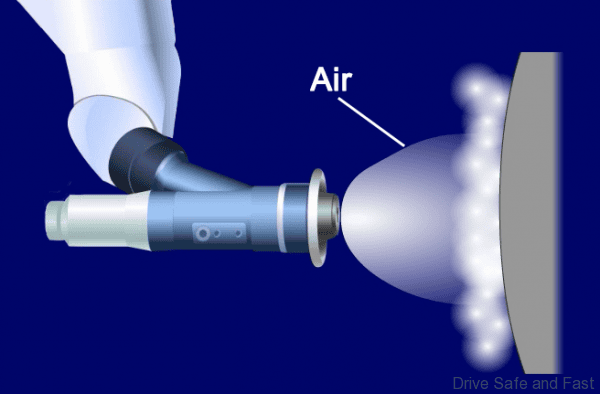Toyota Has a New And Efficient Way To Paint Vehicles
Toyota have developed a new paint atomizer that uses static electricity instead of air in the vehicle body painting process. The airless painting process is the first of its kind and achieves over 95% coating efficiency, which is the highest in the world. Conventional methods only have about 60-70% efficiency.
In addition, this new method will reduce CO2 emissions by about 7% in Toyota production facilities. It also has the advantage of using less floor space.

This new Electrostatic atomization process will be deployed at Toyota’s Takaoka and Tsutsumi Plants first, where the following vehicles have or are being produced:
- Prius
- Prius a
- Prius PHV
- Camry
- Premio
- Allion
- Scion tC
- Corolla sedan
- Corolla Rumion
- iQ
For a more in depth explanation on this technology, check out the press release below.

PRESS RELEASE
Toyota Motor Corporation (Toyota) has developed a new type of paint atomizer (airless paint atomizer) that uses static electricity instead of air, to replace the conventional air paint atomizers used in the vehicle body painting process. The newly developed airless painter, the first of its kind in the world*, achieves over 95 percent coating efficiency (the amount of paint sprayed versus the amount that actually adheres onto the vehicle body), the highest in the world*, from conventional efficiency of approximately 60 to 70 percent.
By deploying the airless paint atomizer in Toyota Group’s painting process, it is expected that the Group can reduce its CO2 emissions by about 7 percent. In addition, the collection device situated at the bottom of the paint booth (the area where paint is sprayed) can be made more compact. Therefore, it is able to make painting production lines more compact for the future.
Toyota is advancing initiatives to achieve its Plant Zero CO2 Emissions Challenge, one of the targets included in the Toyota Environmental Challenge 2050 announced in 2015. As part of this effort, it developed the airless paint atomizer and deployed it at both Takaoka and Tsutsumi Plants. Gradual deployment at other plants is planned as well as consideration of deployment among other Toyota Group companies and licensing the technology to other companies.
Features of airless paint atomizer
Conventional air paint atomizer sprayed paint primarily using aerodynamic force, then paint the vehicle body with the atomized particles using an air paint atomizer. For this reason, paint particles are scattered by the air ricocheting off the vehicle body, resulting in a coating efficiency of approximately 60 to 70 percent. By comparison, the new airless paint atomizer uses electricity to sprayed the paint (electrostatic atomization), and the statically charged particles coat in such a way that they gravitate toward the vehicle body (electrostatic painting). Electrostatic atomization and electrostatic painting technologies greatly reduce the number of atomized particles that scatter, thereby achieving a higher coating efficiency.
New technologies that achieve high coating efficiency
The tip of the airless paint atomizer features a rotating cylindrical head that optimize the amount of paint sprayed
Electrostatic atomization technology is used in beauty treatment devices and other instruments that spray fine amounts of liquid; here, we applied it to vehicle body painting. Specifically, the tip of the paint sprayer is cylindrical. Approximately 600 special grooves are inserted into the tip, which is rotated to create a centrifugal force, inducing the paint to flow into the grooves and atomize through static electricity. In this way, we developed the world’s first technology that paints vehicle bodies with atomized paint particles using static electricity.
Highly accurate current control that makes close-range painting possible
The unevenness of the vehicle body causes the distance between the cylindrical head and the vehicle body to fluctuate, making the electrical current unstable. However, the airless paint atomizer constantly monitors the variations in current and automatically controls the voltage, maintaining a distance of approximately 10 centimeters between the cylindrical head and the vehicle body. Hence, electrostatic atomization and electrostatic painting under a fixed current is rendered possible, in turn preventing variation in the size of the paint particles―the result is high-quality painting.


